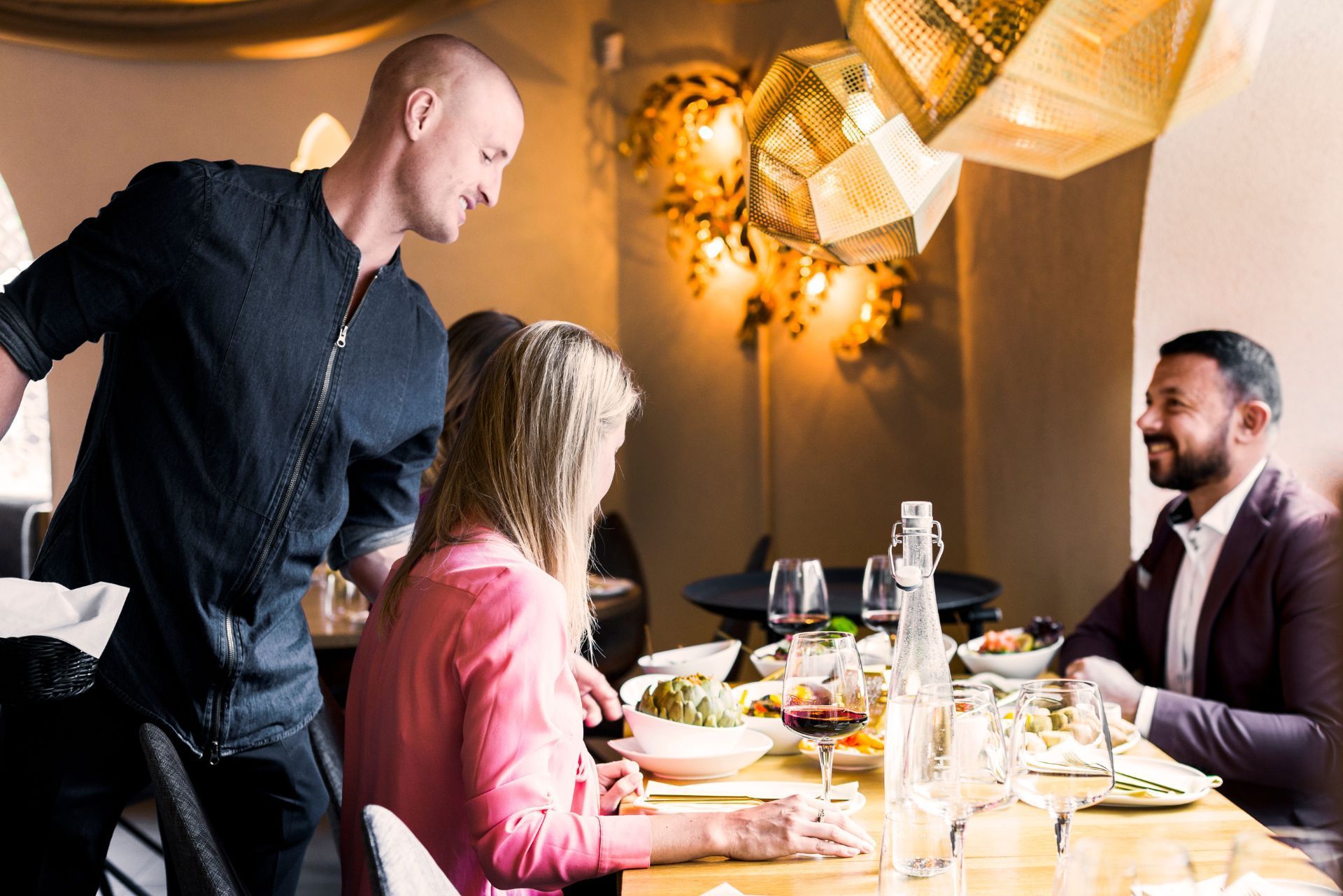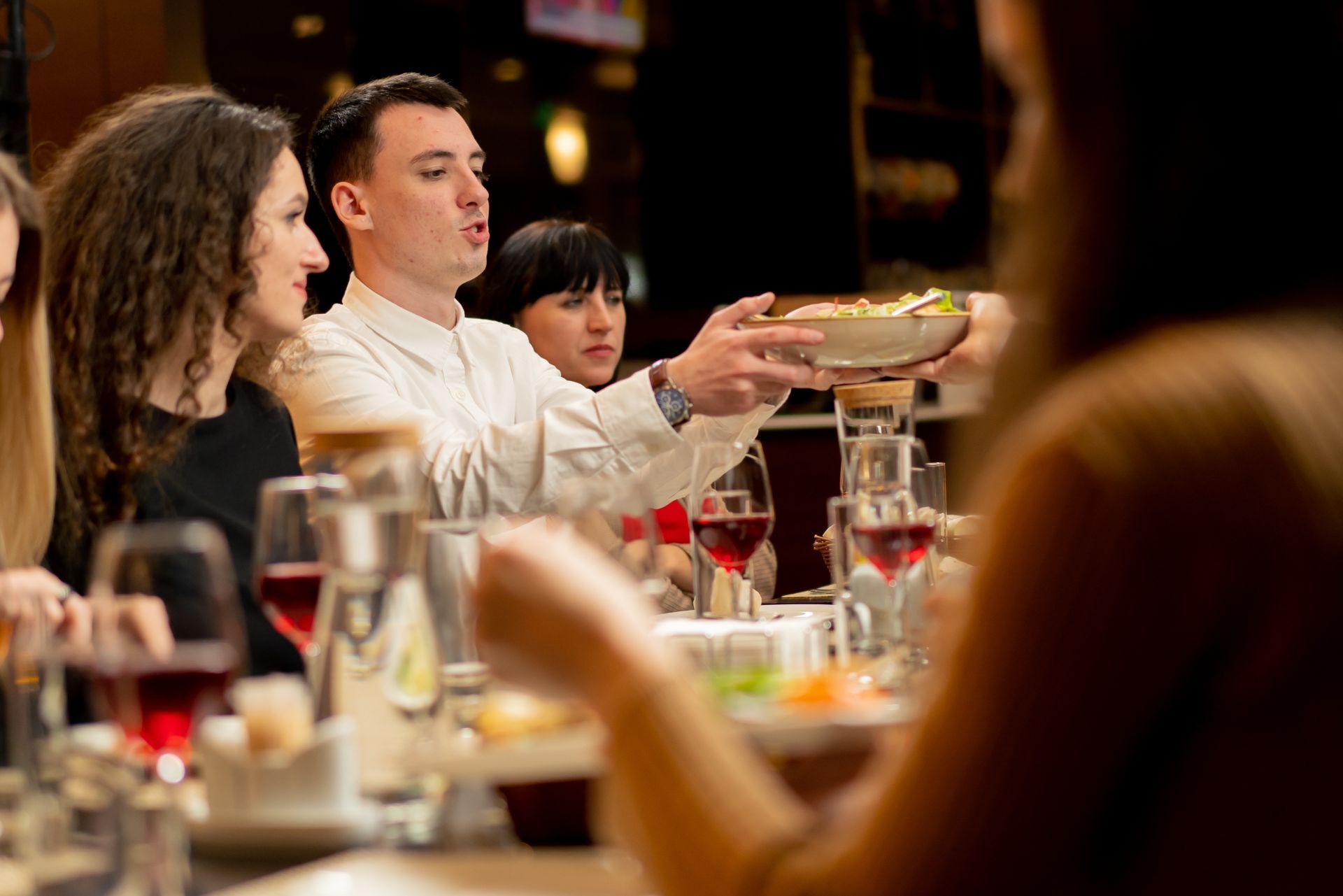Top 3 Recommended Policies

Owning and operating a fine dining restaurant in Colorado is an exciting venture, but it comes with its unique set of challenges and risks. From rising operational costs to navigating complex regulations, restaurateurs must be prepared to protect their business assets and reputation. One critical aspect often overlooked until it’s too late is securing the right insurance coverage. This comprehensive guide explores everything you need to know about restaurant insurance in Colorado, focusing on the fine dining sector, to help you safeguard your investment and ensure long-term success.
The Landscape of Colorado’s Restaurant Industry
Colorado’s restaurant industry is a significant economic driver, employing over 303,000 people and making up 11% of the state’s labor force. This highlights how vital restaurants are to the local economy and communities. However, the sector is currently navigating what experts describe as a “perfect storm” of challenges, including rising costs, labor shortages, and regulatory pressures.
In 2024 alone, more than 200 restaurants closed statewide, with Denver experiencing the brunt of these closures, accounting for 82% of them. Despite these setbacks, some areas of the industry have shown resilience. For example, a 2023 study by the Colorado Department of Labor and Employment revealed that after Denver raised its minimum wage above the state level, per-capita sales-tax revenues at bars and restaurants surged by 85%, double the rate of the rest of Colorado. This growth emphasizes the potential for recovery and profitability when businesses adapt strategically.
Understanding this dynamic environment is crucial for fine dining establishments, as it directly impacts insurance needs and costs. The volatility in the industry means that insurance policies must be comprehensive and tailored to address specific risks.
Moreover, the culinary landscape in Colorado is evolving, with a growing emphasis on farm-to-table dining and sustainability. Many restaurants are now prioritizing local ingredients, which not only supports local farmers but also appeals to a consumer base increasingly concerned with environmental impact. This shift has led to a burgeoning market for organic and sustainably sourced foods, creating a unique niche for restaurants that can successfully integrate these practices into their menus. The popularity of such dining experiences has also fostered a vibrant community of food enthusiasts who actively seek out new and innovative culinary experiences, further driving the demand for diverse dining options.
Additionally, the rise of technology in the restaurant sector cannot be overlooked. Many establishments are adopting advanced point-of-sale systems, online ordering platforms, and delivery services to enhance customer experience and streamline operations. This digital transformation has been particularly crucial during the pandemic, as restaurants adapted to changing consumer behaviors and preferences. As a result, the integration of technology not only helps in managing operational challenges but also provides valuable data insights that can inform marketing strategies and menu development, ultimately leading to greater customer satisfaction and loyalty.

Why Fine Dining Restaurants Need Specialized Insurance
Fine dining restaurants face a unique set of risks compared to other types of eateries. These include higher-value inventory, expensive kitchen equipment, premium furnishings, and a clientele with elevated expectations. Additionally, liability risks can be greater due to the complex nature of service, including alcohol service and events hosting. The ambiance and experience that fine dining establishments strive to create can also lead to increased exposure to risks, as any misstep in service or food quality can result in significant reputational damage, alongside financial repercussions.
Insurance for fine dining establishments typically covers several key areas:
- Property Insurance: Protects the physical restaurant space, including the building, kitchen equipment, furniture, and décor from damage caused by fire, theft, or natural disasters.
- Liability Insurance: Covers claims related to customer injuries, foodborne illnesses, or alcohol-related incidents.
- Business Interruption Insurance: Provides financial support if the restaurant must close temporarily due to a covered event, such as a fire or severe weather.
- Workers’ Compensation: Essential for covering employee injuries, especially in a labor-intensive environment like a restaurant.
- Liquor Liability Insurance: Critical for fine dining venues that serve alcohol, protecting against claims related to intoxication or alcohol-related accidents.
Given the rising costs in Colorado, including a significant increase in homeowners’ insurance premiums (which often correlate with commercial property insurance trends), fine dining restaurants must anticipate higher insurance expenses. Colorado now ranks as the sixth-costliest state for homeowners’ insurance, with premiums up 58% from 2018 to 2023, a trend that also affects commercial insurance rates. This increase can strain the budgets of fine dining establishments, which often operate on thin margins, making it essential for owners to carefully evaluate their insurance needs and seek out tailored policies that provide adequate coverage without unnecessary costs.
Several factors contribute to these rising insurance costs, including catastrophes, reinsurance expenses, escalating construction costs, supply chain issues, and social inflation—all of which can impact restaurant insurance premiums in Colorado. For instance, the recent uptick in natural disasters has prompted insurers to reassess risk models, leading to higher premiums for properties in vulnerable areas. Additionally, the ongoing challenges in the supply chain can lead to increased costs for ingredients and materials, which may indirectly influence insurance rates as businesses adjust to maintain profitability amidst fluctuating expenses.
For a detailed look at these drivers, the
Colorado Restaurant Association provides an insightful breakdown. Understanding these factors is crucial for restaurant owners, as it allows them to make informed decisions about their insurance policies, ensuring they are adequately protected while navigating the complexities of the fine dining landscape. Furthermore, engaging with an insurance broker who specializes in the restaurant industry can provide valuable insights and help fine dining establishments tailor their coverage to meet specific operational needs and risks.
Key Challenges Impacting Insurance for Colorado Restaurants
Several recent developments have shaped the insurance landscape for fine dining restaurants in Colorado:
Rising Operational Costs and Economic Pressures
The cost of doing business in Colorado continues to climb, with insurance being a significant contributor. Beyond insurance, rising labor costs, including minimum wage increases, have a complex impact. While higher wages can improve employee retention and customer experience, they also increase payroll expenses, which in turn can affect workers’ compensation premiums.
Denver’s experience with minimum wage hikes is a case in point. The city saw an 85% increase in per-capita sales-tax revenues at bars and restaurants after raising wages, indicating a boost in business activity. However, this growth comes alongside increased operational costs that insurance providers factor into their risk assessments. Additionally, the competitive landscape means that restaurants must continually innovate their offerings and service models, which can lead to further financial strain as they seek to attract and retain customers in an increasingly crowded market.
Insurance Cost Drivers Specific to Colorado
Colorado’s unique risk profile includes exposure to natural disasters such as wildfires and hailstorms, which can cause significant property damage and drive up insurance claims. Additionally, social inflation—where legal and societal trends lead to higher claims and settlements—has been noted as a factor increasing liability insurance costs.
Furthermore, supply chain disruptions and rising construction costs make rebuilding or repairing damaged property more expensive, thus increasing insurance premiums. The ProgramBusiness report highlights how these factors contribute to Colorado’s high insurance costs. The growing frequency of extreme weather events, attributed to climate change, has also led to a reevaluation of risk by insurers, who may implement stricter underwriting criteria or increase premiums to mitigate potential losses. This has created a challenging environment for restaurateurs who are already navigating a post-pandemic recovery landscape.
Regulatory and Policy Considerations
Recent proposals, such as a 20% service charge on Denver restaurant bills, have sparked debate about their economic impact. A policy think tank estimated that such a surcharge could cost Denver’s economy $718 million over five years, potentially affecting restaurant profitability and, by extension, insurance risk profiles.
Moreover, some data on restaurant closures and labor issues have been contested. For instance, claims that Denver lost 22% of its restaurants have been challenged due to incomplete data, underscoring the importance of accurate information when assessing market risks. The potential for misinterpretation of such data can lead to misguided policy decisions that may further exacerbate the challenges faced by the restaurant industry. As stakeholders navigate these complexities, the need for comprehensive research and collaboration between policymakers and business owners becomes increasingly critical to ensure a balanced approach that supports both economic growth and sustainable insurance practices.

Choosing the Right Insurance Coverage for Fine Dining Restaurants
Given the complexities and risks, fine dining restaurant owners in Colorado should consider the following when selecting insurance coverage:
Assess Your Specific Risks
Every restaurant has unique vulnerabilities. Conducting a thorough risk assessment helps identify the types and levels of coverage needed. For example, a fine dining restaurant with an extensive wine collection and high-end kitchen appliances will require robust property insurance. Additionally, factors such as location can play a significant role in risk exposure; restaurants situated in areas prone to natural disasters, such as wildfires or heavy snowfall, may need specialized coverage to address potential damages from these events. Understanding the specific risks associated with your establishment can lead to more informed decisions regarding your insurance needs.
Work with Experienced Insurance Providers
Partnering with insurers familiar with the restaurant industry and Colorado’s market conditions ensures policies are tailored and comprehensive. Experienced brokers can also help navigate the nuances of liability, liquor licensing, and workers’ compensation. They can provide insights into industry trends and emerging risks, such as the increasing importance of food safety and health regulations. Moreover, a knowledgeable insurance provider can assist in developing a risk management strategy that not only protects your business but also enhances its reputation, which is crucial in the competitive fine dining sector.
Consider Additional Coverage Options
Beyond standard policies, consider endorsements or additional coverage such as cyber liability insurance to protect against data breaches, or employment practices liability insurance to cover workplace disputes. Given the rise of online reservations and digital payment systems, cyber liability has become increasingly important for fine dining establishments that handle sensitive customer information. Furthermore, coverage for business interruption can be vital, especially in the event of unforeseen circumstances like a pandemic or natural disaster, allowing you to maintain financial stability while your restaurant is temporarily closed.
Review and Update Policies Regularly
The restaurant industry’s dynamic nature means insurance needs can change quickly. Regular policy reviews ensure coverage keeps pace with business growth, regulatory changes, and evolving risks. It's essential to assess not only the physical aspects of your restaurant but also changes in your menu offerings, staffing levels, and customer demographics. For instance, introducing new high-risk menu items or expanding your outdoor dining area may necessitate adjustments to your existing coverage. Staying proactive about your insurance policy can help mitigate potential gaps in coverage and ensure that your fine dining restaurant is adequately protected as it evolves.
How Insurance Supports Business Continuity and Growth
Insurance is not just a safety net; it is a strategic tool that supports business continuity and growth. In the event of a disaster or liability claim, having adequate insurance means a fine dining restaurant can recover faster, protect its reputation, and maintain customer trust.
For example, business interruption insurance can provide critical financial support if a restaurant must close temporarily due to unforeseen events, helping cover fixed costs and lost income. This coverage can be the difference between surviving a crisis or facing permanent closure.
Moreover, well-insured restaurants can confidently invest in expansions, renovations, or new services, knowing that risks are managed. This confidence is essential in a competitive market like Denver, where fine dining establishments strive to differentiate themselves.
In addition to business interruption insurance, liability coverage plays a crucial role in safeguarding a restaurant's future. With the potential for slip-and-fall accidents or foodborne illnesses, having comprehensive liability insurance protects against lawsuits that could otherwise drain financial resources and tarnish a restaurant's reputation. This protection allows owners to focus on delivering exceptional dining experiences rather than worrying about the financial fallout from unforeseen incidents.
Furthermore, insurance can also extend to employee-related risks, such as workers' compensation and employment practices liability insurance. These coverages not only protect the business from claims but also foster a positive work environment. When employees feel secure and valued, they are more likely to provide outstanding service, which enhances customer satisfaction and loyalty. In a city like Denver, where word-of-mouth and online reviews can significantly impact a restaurant's success, investing in employee well-being through insurance can lead to a thriving establishment that stands the test of time.
Conclusion: Navigating Insurance in Colorado’s Fine Dining Scene
Operating a fine dining restaurant in Colorado presents exciting opportunities alongside significant challenges. With over 303,000 people employed in the state’s restaurant industry, the sector is a vital part of Colorado’s economy but is also subject to economic pressures, regulatory changes, and rising costs.
Insurance plays a pivotal role in managing these risks. Understanding the specific challenges—such as rising insurance premiums driven by natural disasters, social inflation, and operational costs—is essential for selecting appropriate coverage. Leveraging expert insights and up-to-date industry data can help restaurateurs make informed decisions that protect their business assets and support long-term success.
For more insights into the economic and regulatory environment impacting Colorado restaurants, resources like Axios Denver and Colorado Public Radio provide valuable perspectives.
Ultimately, investing time and resources into the right insurance coverage is a critical step for any fine dining restaurant owner in Colorado aiming to thrive amid the state’s evolving hospitality landscape.
Contact Us
Phone
Location

